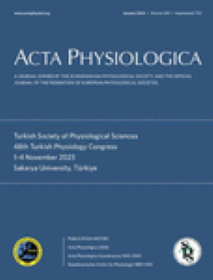Potential role of signal transducer and activator of transcription 3 in the amygdala in mitigating stress-induced high blood pressure via exercise in rats
Abstract
Aim
Chronic stress elevates blood pressure, whereas regular exercise exerts antistress and antihypertensive effects. However, the mechanisms of stress-induced hypertension and preventive effects through exercise remain unknown. Thus, we investigated the molecular basis involved in autonomic blood pressure regulation within the amygdala.
Methods
The effects of a 3-week restraint stress and daily voluntary exercise against stress on cardiovascular parameters and gene expression profiles in the amygdala were examined using a microarray method. Candidate genes were selected from differentially expressed genes; the localization of their expression within the central nucleus of the amygdala and their roles in cardiovascular regulation were examined using small-interfering RNA transfection and radiotelemetry.
Results
Chronic restraint stress caused an increase in blood pressure levels; however, with voluntary exercise, the blood pressure levels remained comparable to those of the controls. Compared with the controls, chronic restraint stress decreased signal transducer and activator of transcription 3 expression in the amygdala, whereas voluntary exercise improved its expression to normal levels. Immunohistochemical staining revealed the expression of signal transducer and activator of transcription 3 in neurons of the amygdala; inhibition of this expression using small-interfering RNA increased the arterial pressure. However, spontaneous baroreflex gain and low- and high-frequency components of heart rate variability remained unaffected by the inhibition of signal transducer and activator of transcription 3.
Conclusion
In the amygdala, signal transducer and activator of transcription 3 regulates the blood pressure levels and is possibly involved in blood pressure elevation in response to chronic stress and its improvement by voluntary exercise.

 求助内容:
求助内容: 应助结果提醒方式:
应助结果提醒方式:


